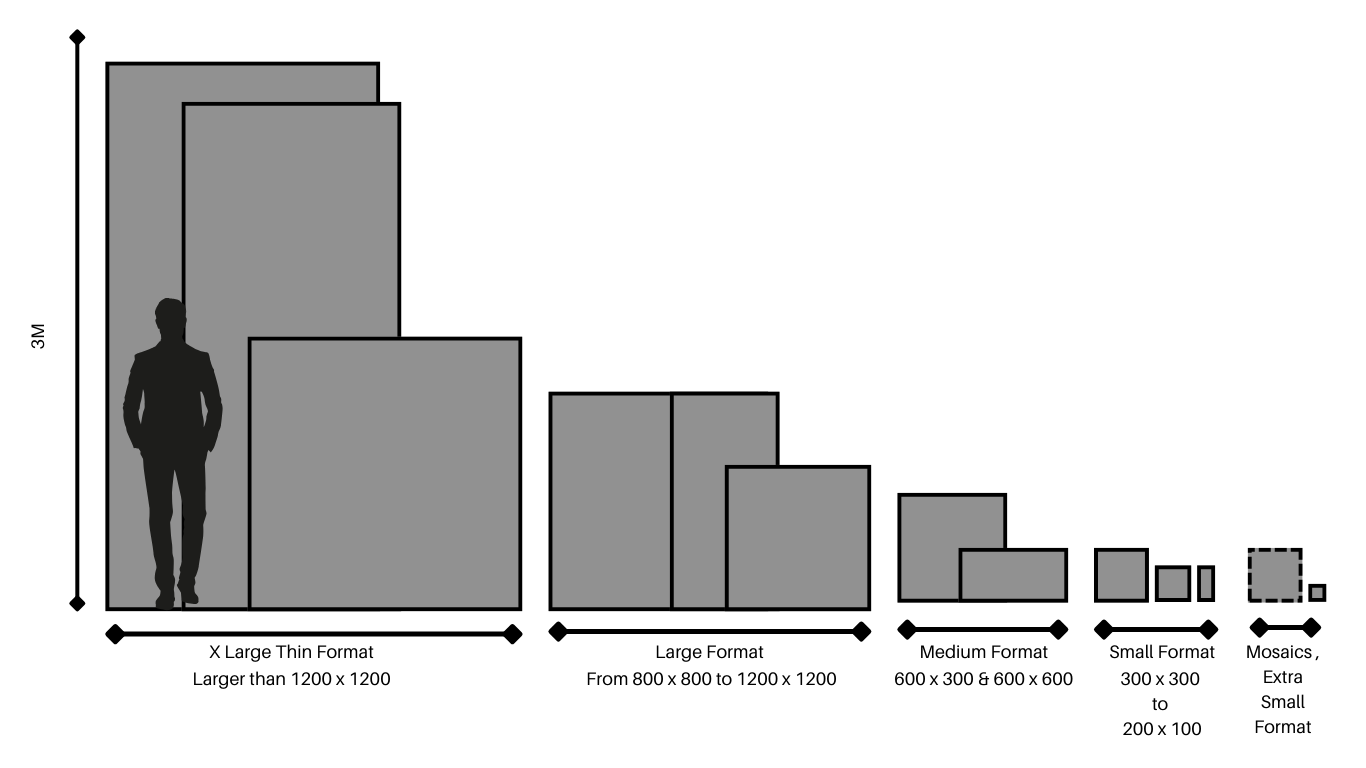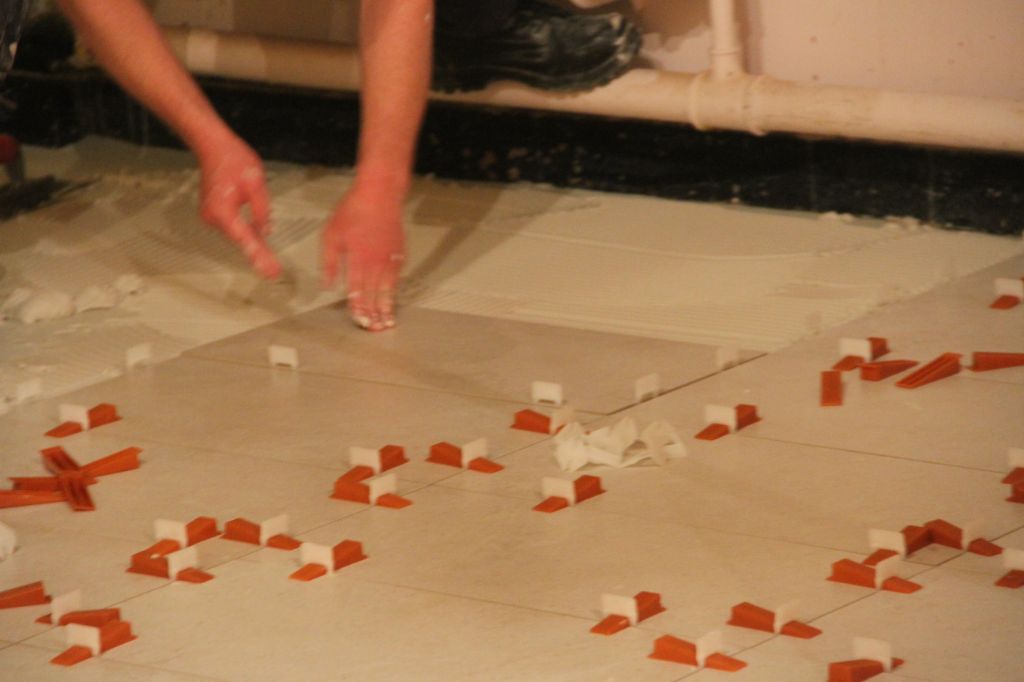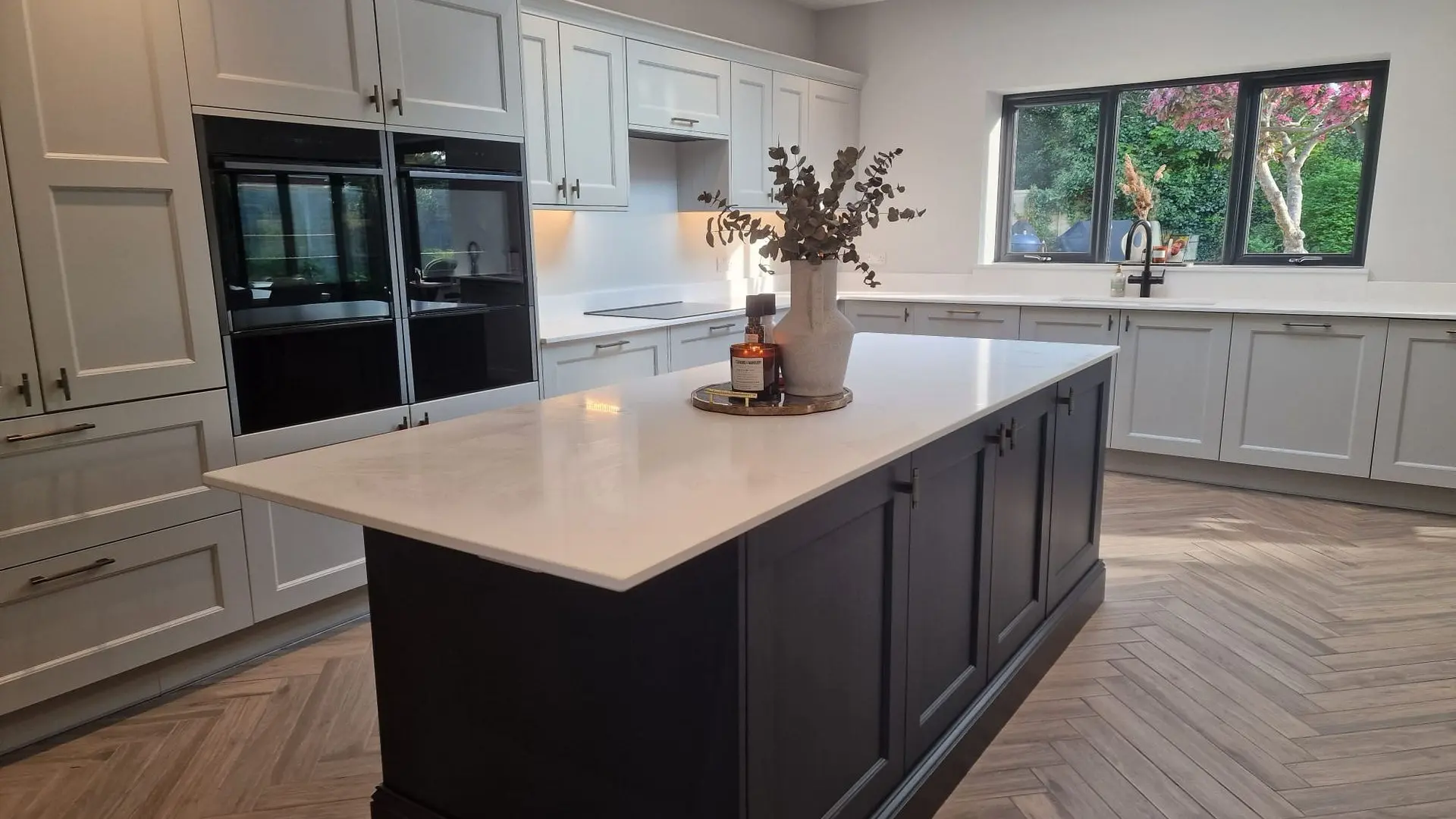What are the costs of installing a new tiled bathroom space? And what affects the cost?
When planning a new bathroom or a bathroom refurbishment there are several factors that can affect the total costs. From the location of your property to the size of the tiles you choose. It is well worth taking it all into consideration before embarking on an unknown costly journey.
Location
- Where you are based in the UK can significantly impact tiling costs. If you are based in the Midlands, a large area of tiling can cost from £25/m2 for an optimum tile size. Whereas in London, prices start from around £45/m2 for standard tile size and large areas.
- What kind of access you have to your home. Homes with difficult access, such as no driveway/ lots of stairs, limited lift access may see higher costs due to the complexity of getting heavy and awkward sized materials to the site.
Tile Size & Format & Type:
- The optimal tile size for cost effectiveness in tiling bathrooms tends to be 600 x 600mm or 600 x 300mm. These sizes are both easy to install and have minimized waste throughout the project.
- Larger tiles, tiles bigger than 1200 x 600mm require two people to handle them so higher labour costs. These tiles also result in more wastage to make them fit the rom size, this is particularly in smaller areas like small bathroms where cutting to size is more difficult.
- Smaller tiles, decors & mosaics can be more expensive to install, with costs sometimes increasing by four times compared to standard tiles due to the additional work in handling, levelling, spacing.
- The type of tile you choose, if it is marble or natural stone the cost will be a lot higher in some cases, depending how rare or costly it is to quarry or manufacture.

Adhesive & Grout:
It is easy forget about the additional costs of tiling in the accessories, such as adhesives & grouts, for these you need to add approximately £9-10/m2 to the total cost. In addition, these costs can increase for more intricate small tiles and also for larger tile installations.

Waste Percentage:
Calculating realistic waste percentages for a bathroom can help to avoid extra costs later when having to order in extra material and small delivery charges, extra deliveries to site.
- For Small tiles: you can expect around 10-15% for waste
- For Large tiles: Waste can rise to 40-50% due to the need for cuts in small spaces and the likelihood of breakages during handling.
Space & Cutting:
In small bathrooms with complex layouts, pipes/boxing/fixtures/joinery, tiling can be a lot more time consuming and costly. The cost per square metre is often higher due to the precision need when cutting tiles and finding solutions to obstacles.

Additional Features that can affect the cost:
- Levelling Clips: Using levelling clips ensures a smooth finish but does add to the cost.
- Niches & Shelving: Extra features like niches and shelves although great additions can significantly increase labour time and material and in turn increase costs.
- Walk-In Showers: A level, walk in shower will require envelop cutting, this adds to the level of detail and complexity and also can increase waste with more potential breakages. You could consider instead a preformed shower tray with the correct levels, if you wanted to reduce costs.
- Tanking: Proper waterproofing or tanking is essential in a bathroom, especially in a wet area such as a shower. A qualified installer must do this, as it requires a guarantee to protect against leaks in the future.
- Underfloor heating: If you are considering underfloor heating, this will affect the tiling process and substrate preparation. This can increase costs as well as the cost of the system you choose.
- Existing substrate: Depending on the existing substrate this can affect the cost. For example if the tiles are being laid on a wooden floor, you will require a decoupling membrane.

Bathroom Replacement Costs:
Finally, if you are replacing tiles from an old bathroom floor there will be costs involved.
- Removing old tiles: This is usually charged on a day rate as the difficulty can vary.
- Replastering or relevelling the floor: Once the old tiles are removed, you may need to re-plaster walls or relevel the floor before new tiles can be laid.
- Along with replacing tiles you will need to replace new fixtures and fittings. This will also require extra coordination with plumbing and joinery to get things fitted correctly.
In summary, tiling a bathroom floor has many variables that can drive up the cost. To ensure a seamless project it is important to plan early, consider the size and type of tiles and work with a qualified professional to ensure you have satisfaction. Making sure you consider all the factors before you start will save disappointment later.


What are the costs of tiling a bathroom and what factors can increase the costs?